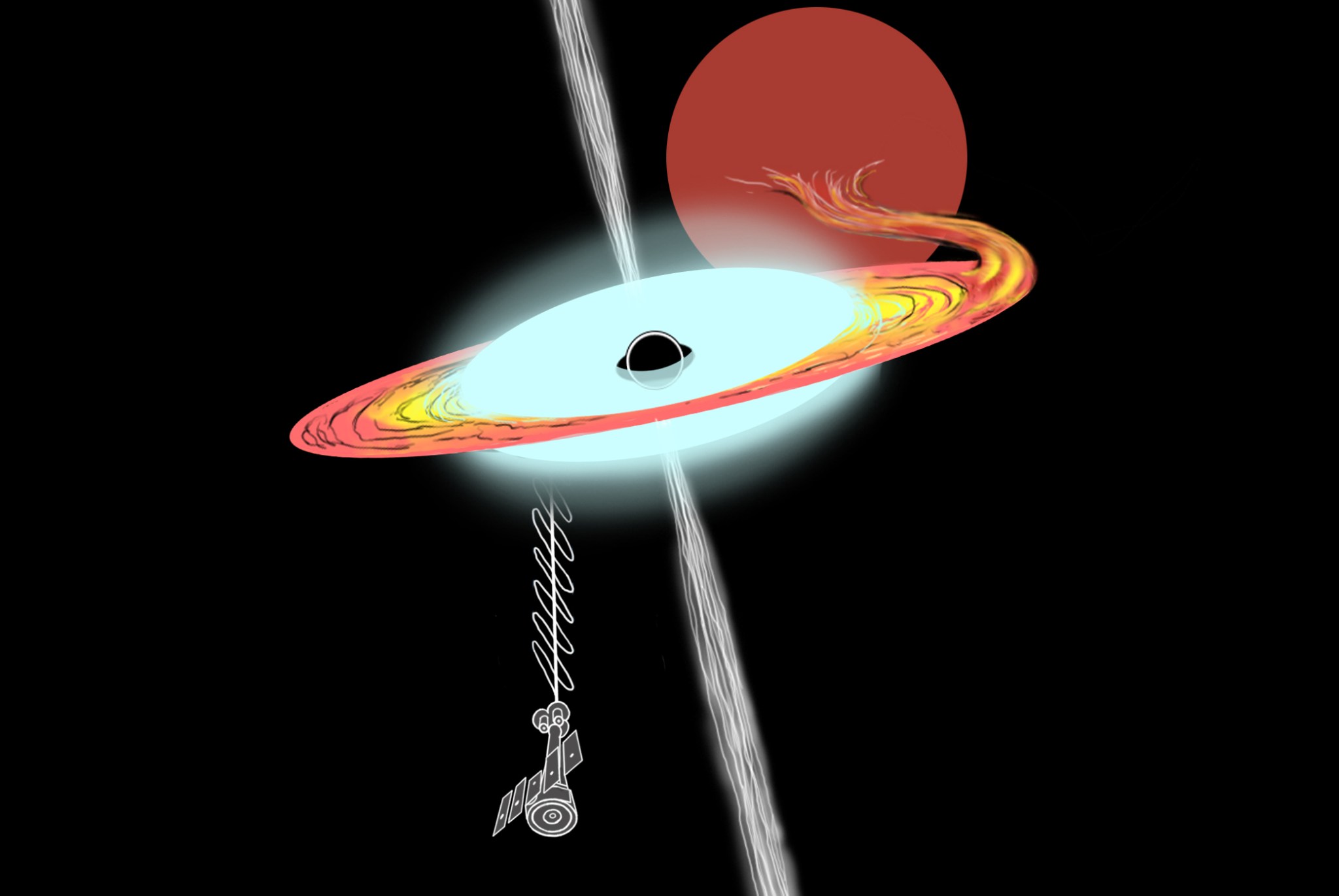5 min read
NASA's IXPE (Imaging X-ray Polarimetry Explorer) has helped astronomers better understand the shapes of structures essential to a black hole - specifically, the disk of material swirling around it, and the shifting plasma region called the corona.
The stellar-mass black hole, part of the binary system Swift J1727.8-1613, was discovered in the summer of 2023 during an unusual brightening event that briefly caused it to outshine nearly all other X-ray sources. It is the first of its kind to be observed by IXPE as it goes through the start, peak, and conclusion of an X-ray outburst like this.

Swift J1727 is the subject of a series of new studies published in The Astrophysical Journal and Astronomy & Astrophysics. Scientists say the findings provide new insight into the behavior and evolution of black hole X-ray binary systems.
"This outburst evolved incredibly quickly," said astrophysicist Alexandra Veledina, a permanent researcher at the University of Turku, Finland. "From our first detection of the outburst, it took Swift J1727 just days to peak. By then, IXPE and numerous other telescopes and instruments were already collecting data. It was exhilarating to observe the outburst all the way through its return to inactivity."
Until late 2023, Swift J1727 briefly remained brighter than the Crab Nebula, the standard X-ray "candle" used to provide a baseline for units of X-ray brightness. Such outbursts are not unusual among binary star systems, but rarely do they occur so brightly and so close to home - just 8,800 light years from Earth. The binary system was named in honor of the Swift Gamma-ray Burst Mission which initially detected the outburst with its Burst Alert Telescope on Aug. 24, 2023, resulting in the discovery of the black hole.
X-ray binary systems typically include two close-proximity stars at different stages of their lifecycle. When the elder star runs out of fuel, it explodes in a supernova, leaving behind a neutron star, white dwarf, or black hole. In the case of Swift J1727, the powerful gravity of the resulting black hole stripped material from its companion star, heating the material to more than 1.8 million degrees Fahrenheit and producing a vast outpouring of X-rays. This matter formed an accretion disk and can include a superheated corona. At the poles of the black hole, matter also can escape from the binary system in the form of relativistic jets.
IXPE, which has helped NASA and researchers study all these phenomena, specializes in X-ray polarization, the characteristic of light that helps map the shape and structure of such ultra-powerful energy sources, illuminating their inner workings even when they're too distant for us to see directly.






